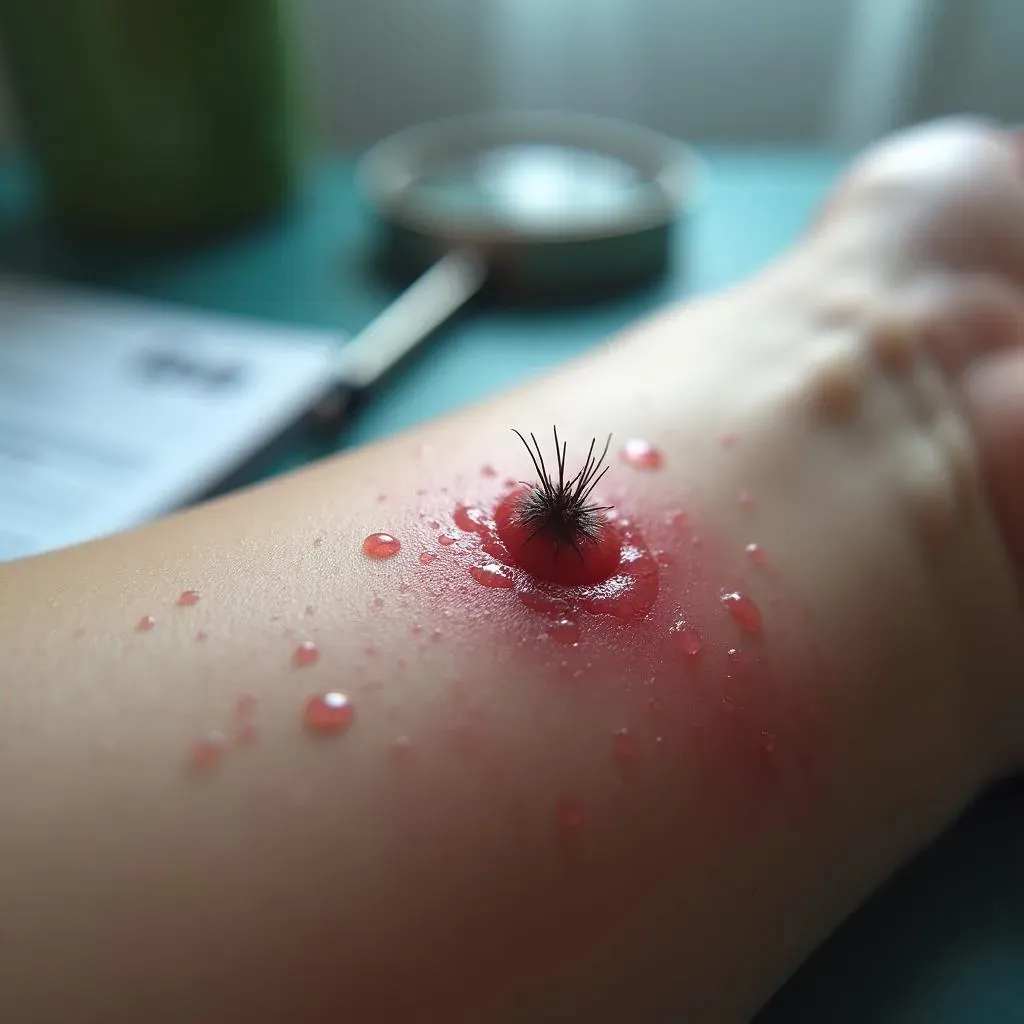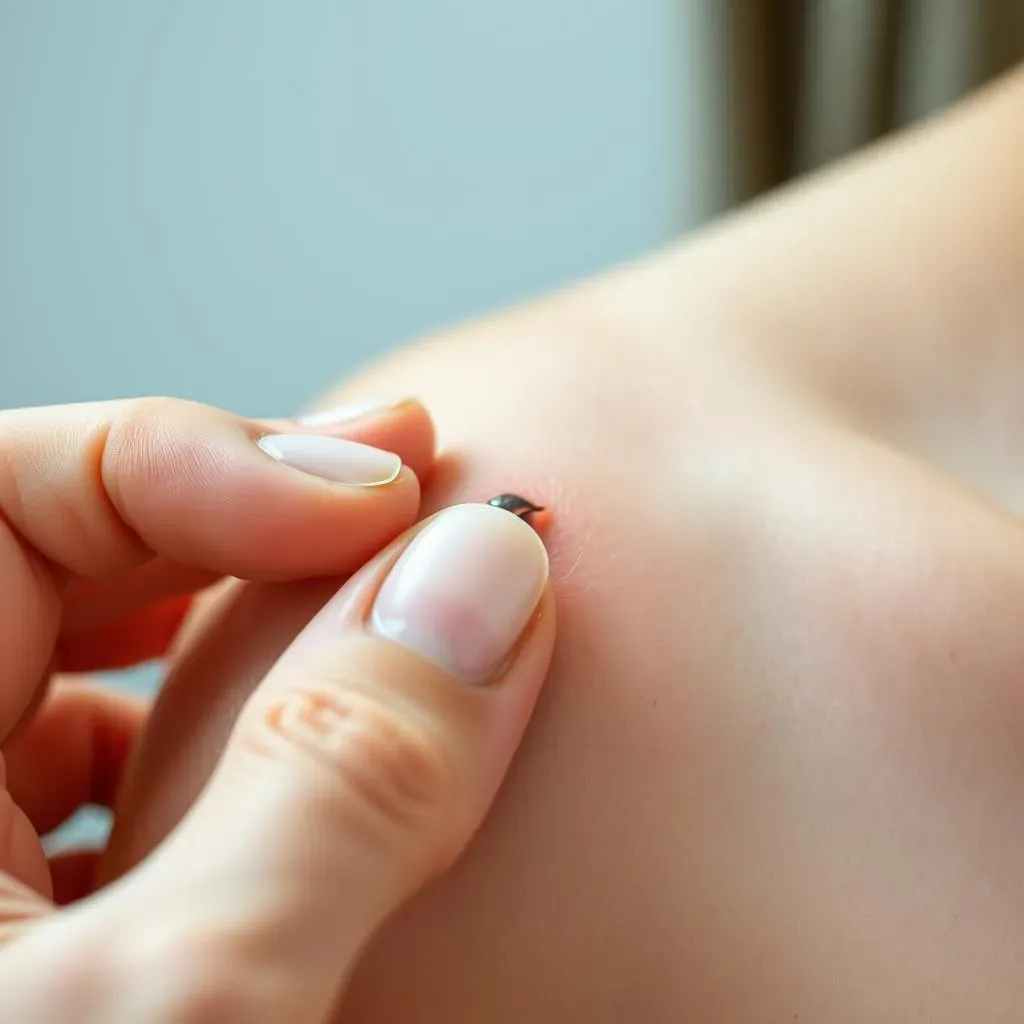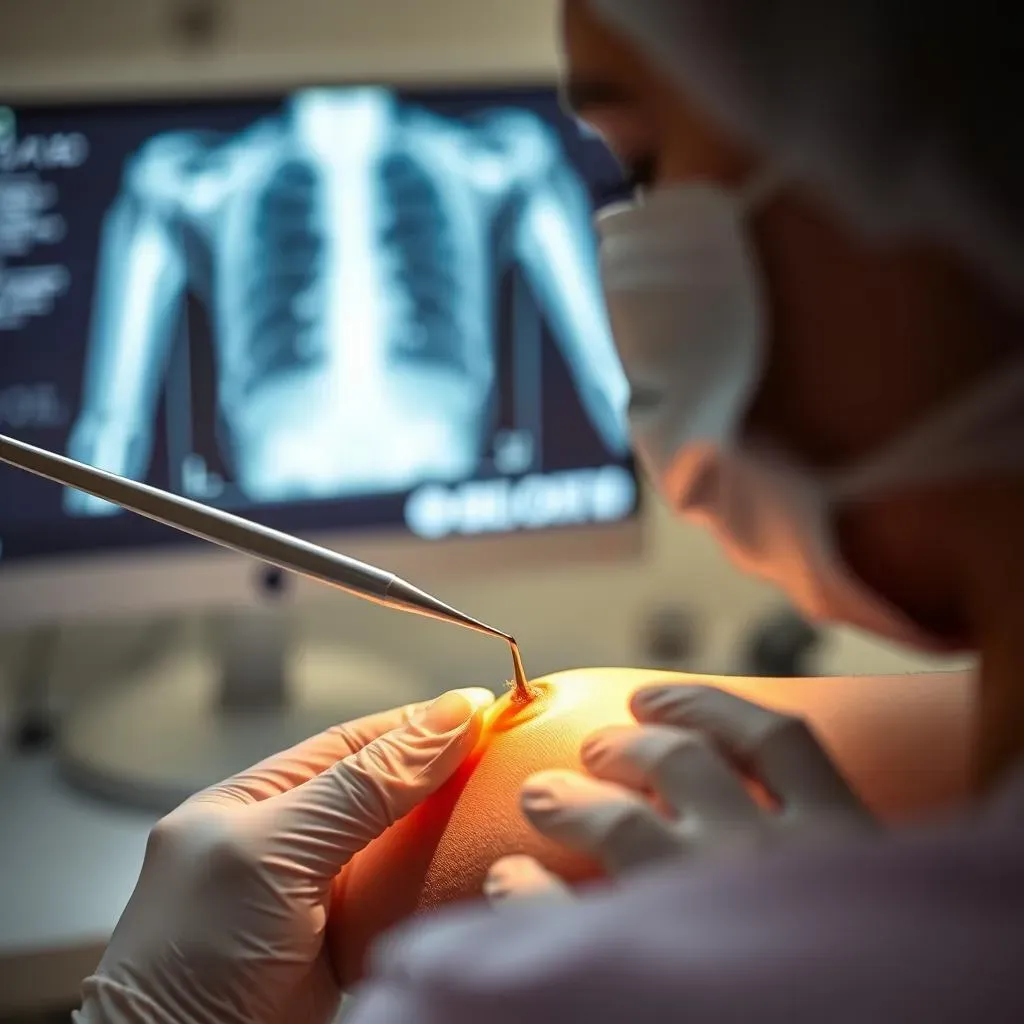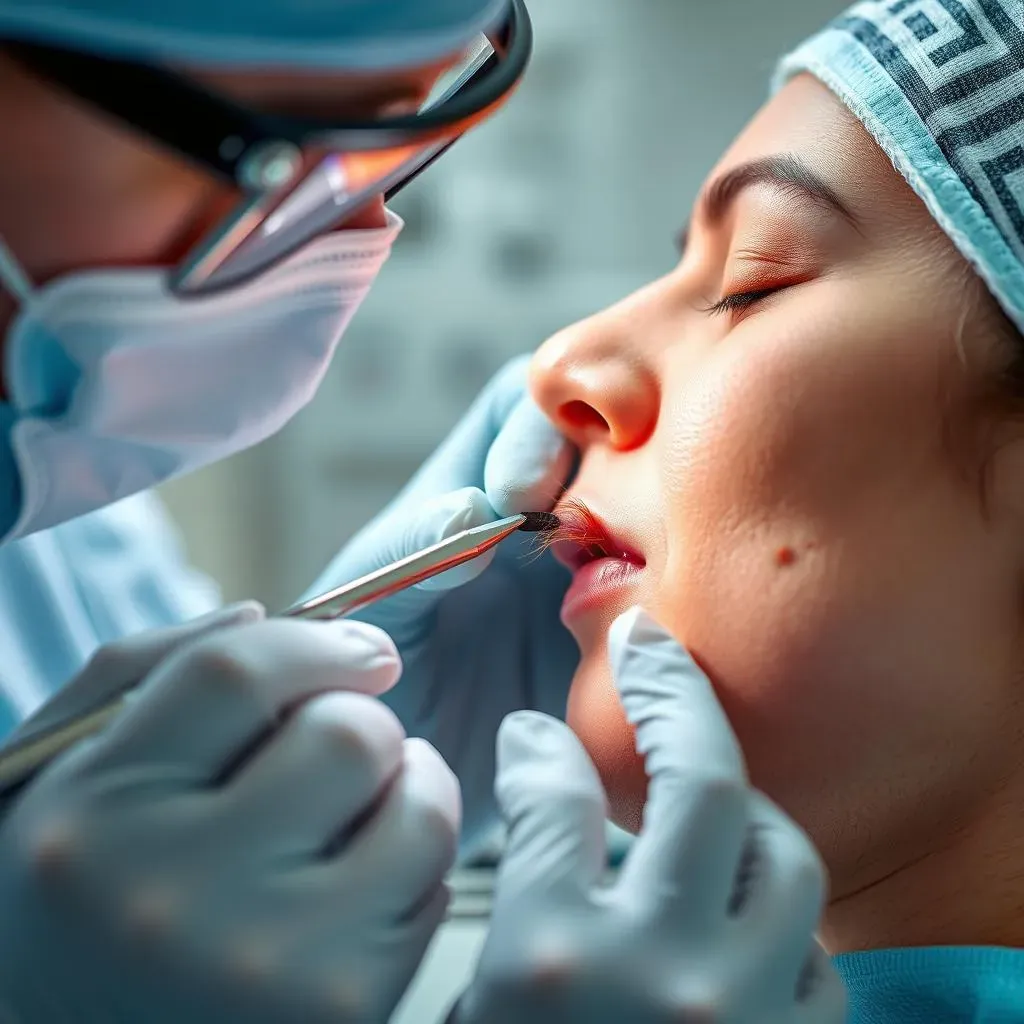Table of Contents
Ingrown hairs can be a painful and frustrating problem, especially when they become infected. Removing infected ingrown hair requires a combination of proper skincare, careful techniques, and in some cases, medical intervention. If you're struggling with ingrown hairs, you're not alone. Millions of people experience this common issue, particularly in areas where hair removal is frequent, such as the face, legs, armpits, and pubic area. This article will guide you through the process of removing infected ingrown hair, discussing symptoms, causes, diagnosis, treatment options, and prevention strategies. From home remedies to professional treatments, we'll explore the best methods for removing infected ingrown hair and promoting healthy skin. Whether you're looking for ways to prevent ingrown hairs or need advice on how to treat an existing infection, this article will provide you with the information you need to take control of your skin health.
Understanding Ingrown Hair: Symptoms and Causes

Understanding Ingrown Hair: Symptoms and Causes
Ingrown hairs occur when hair curls back or grows sideways into the skin, leading to inflammation, redness, and sometimes infection. They are more common in areas where hair removal is frequent, such as the face, legs, armpits, and pubic area. Individuals with curly or coarse hair, or those with skin of color, are more prone to ingrown hairs due to the natural curl of their hair. Symptoms of ingrown hairs include:
- Painful, inflamed bumps on the skin
- Discoloration or hyperpigmentation around the affected area
- Itching and burning sensations
- Pus or discharge if the ingrown hair becomes infected
Ingrown hairs are often caused by hair removal methods that don't remove the hair follicle, allowing the hair to grow back into the skin. Shaving, waxing, and tweezing can all contribute to ingrown hairs. Other factors, such as tight clothing, poor skincare, and genetics, can also increase the risk of developing ingrown hairs.
Causes of Ingrown Hair | Contributing Factors | Prevention Strategies |
|---|---|---|
Improper shaving techniques | Tight clothing, poor skincare | Exfoliate regularly, use gentle shaving products |
Waxing or tweezing | Genetics, curly or coarse hair | Consider alternative hair removal methods, such as depilatory creams |
Understanding the symptoms and causes of ingrown hairs is crucial for effective prevention and treatment. By recognizing the signs of ingrown hairs and addressing the underlying causes, individuals can take steps to reduce their occurrence and promote healthy skin.
Diagnosing Ingrown Hair: Identifying Infection and Seeking Medical Help

Diagnosing Ingrown Hair: Identifying Infection and Seeking Medical Help
Identifying Infected Ingrown Hair
Infected ingrown hairs can be identified by several symptoms, including increased redness, swelling, and pus or discharge around the affected area. If you notice any of these symptoms, it's essential to seek medical attention to prevent further complications, such as scarring or the spread of infection. A healthcare professional will typically diagnose an infected ingrown hair through a visual examination and discussion of your skincare routine.
In some cases, a doctor may prescribe antibiotics to treat the infection. It's crucial to follow their advice and complete the full course of treatment to ensure the infection is fully cleared. Additionally, your doctor may recommend removing the ingrown hair using a sterile needle or other medical instruments.
Symptoms of Infected Ingrown Hair | Description | Medical Attention Needed |
|---|---|---|
Pus or Discharge | Pus or discharge around the ingrown hair indicates infection | Yes |
Increased Redness and Swelling | Redness and swelling that worsens over time | Yes |
Foul Odor | An unpleasant smell from the affected area | Yes |
Seeking Medical Help for Infected Ingrown Hair
If you're experiencing symptoms of an infected ingrown hair, it's essential to seek medical help. A doctor can assess the severity of the infection and provide appropriate treatment. In some cases, they may need to drain the infection or prescribe antibiotics to clear the infection.
- Seek medical attention if you experience increased pain, redness, or swelling
- Seek medical attention if you notice pus or discharge
- Follow your doctor's advice for treating the infection and removing the ingrown hair
Remember, early treatment is key to preventing complications and promoting healthy skin. Don't hesitate to seek medical help if you suspect an infected ingrown hair.
Treating Infected Ingrown Hair: Home Remedies and Medical Interventions

Treating Infected Ingrown Hair: Home Remedies and Medical Interventions
Home Remedies for Infected Ingrown Hair
While home remedies can be effective in treating mild ingrown hairs, infected ingrown hairs often require medical attention. However, there are some home remedies that can help alleviate symptoms and promote healing. Applying a warm compress to the affected area can help bring the ingrown hair to the surface, making it easier to remove. Additionally, using tea tree oil, which has antibacterial properties, can help reduce inflammation and prevent further infection.
- Apply a warm compress for 10-15 minutes, 2-3 times a day
- Use tea tree oil diluted with a carrier oil to reduce inflammation
- Gently exfoliate the area with a gentle scrub to remove dead skin cells
It's essential to note that home remedies should not replace medical treatment. If symptoms persist or worsen, seek medical attention to avoid complications.
Remedy | Benefits | Precautions |
|---|---|---|
Warm Compress | Brings ingrown hair to surface, reduces swelling | Avoid using boiling water, which can cause burns |
Tea Tree Oil | Antibacterial properties, reduces inflammation | Dilute with carrier oil to avoid skin irritation |
Medical Interventions for Infected Ingrown Hair
In cases where an ingrown hair becomes severely infected, medical intervention may be necessary. A doctor can prescribe antibiotics to treat the infection and may also remove the ingrown hair using a sterile needle or tweezers. In severe cases, hair removal methods like electrolysis or laser hair removal may be recommended to prevent future ingrown hairs.
During the removal process, it's crucial to follow the doctor's instructions carefully to avoid further irritation or infection. Keeping the area clean and applying topical creams as directed can help promote healing and reduce the risk of scarring.
- Follow the prescribed antibiotic regimen
- Keep the affected area clean and dry
- Apply topical creams as directed to promote healing
Professional Hair Removal Options
For individuals who experience frequent ingrown hairs, professional hair removal options like electrolysis or laser hair removal can provide a more permanent solution. These methods target the hair follicle, reducing the risk of ingrown hairs. While they may require multiple sessions and can be costly, they offer a long-term solution for those struggling with recurring ingrown hairs.
Method | Benefits | Considerations |
|---|---|---|
Electrolysis | Permanent hair removal, reduces ingrown hairs | Requires multiple sessions, can be time-consuming |
Laser Hair Removal | Fast and effective, reduces hair growth | Can be expensive, may require multiple sessions |
Removing Infected Ingrown Hair: Professional Options and Prevention Strategies

Removing Infected Ingrown Hair: Professional Options and Prevention Strategies
Professional Removal Options for Infected Ingrown Hair
When an ingrown hair becomes severely infected, professional removal may be necessary. Electrolysis and laser hair removal are two popular options for permanent hair removal, reducing the risk of future ingrown hairs. Electrolysis involves inserting a fine needle into the hair follicle and applying a small electrical charge to destroy the hair root. Laser hair removal uses a laser to target the hair follicle, heating it to inhibit future hair growth.
Method | Benefits | Risks and Considerations |
|---|---|---|
Electrolysis | Permanent hair removal, effective for most skin types | Can be time-consuming, may require multiple sessions |
Laser Hair Removal | Fast and effective, suitable for large areas | Can be expensive, may not be suitable for all skin types |
Both methods have their advantages and disadvantages, and the choice between them depends on individual preferences and needs. It's essential to consult with a professional to determine the best course of treatment for your specific case.
Prevention Strategies for Ingrown Hairs
Preventing ingrown hairs requires a combination of proper skincare, hair removal techniques, and lifestyle changes. Exfoliating the skin regularly can help remove dead skin cells and reduce the risk of ingrown hairs. Using gentle shaving products and shaving in the direction of hair growth can also minimize the risk of ingrown hairs.
- Exfoliate regularly to remove dead skin cells
- Use gentle shaving products and shave in the direction of hair growth
- Avoid tight clothing that can irritate the skin
- Consider alternative hair removal methods, such as depilatory creams or waxing
Additionally, maintaining good hygiene and avoiding picking or scratching the skin can help prevent ingrown hairs from becoming infected. By adopting these prevention strategies, individuals can reduce their risk of developing ingrown hairs and promote healthy, smooth skin.
Long-Term Solutions for Ingrown Hair Management
For individuals who experience frequent ingrown hairs, long-term solutions may be necessary. Laser hair removal, for example, can provide a permanent reduction in hair growth, minimizing the risk of ingrown hairs. Electrolysis is another option, although it may require multiple sessions. These methods can be more expensive than temporary hair removal techniques, but they offer a more permanent solution for those struggling with recurring ingrown hairs.
Method | Cost | Effectiveness |
|---|---|---|
Laser Hair Removal | Varies depending on location and number of sessions | Highly effective for most skin types |
Electrolysis | Can be expensive, especially for large areas | Permanent hair removal, but may require multiple sessions |
It's essential to consult with a professional to determine the best long-term solution for your specific needs and budget. By investing in a permanent hair removal method, individuals can enjoy smoother skin and reduce the risk of ingrown hairs.
Living with Ingrown Hair: Management Tips and LongTerm Solutions

Living with Ingrown Hair: Management Tips and LongTerm Solutions
Living with ingrown hairs can be frustrating and painful, but there are several management tips and long-term solutions that can help alleviate symptoms and prevent future occurrences. Proper skincare is essential for managing ingrown hairs. Exfoliating the skin regularly can help remove dead skin cells and reduce the risk of ingrown hairs. Using gentle shaving products and shaving in the direction of hair growth can also minimize the risk of ingrown hairs.
Skincare Routine | Benefits | Frequency |
|---|---|---|
Exfoliation | Removes dead skin cells, reduces ingrown hairs | 1-2 times a week |
Moisturizing | Hydrates the skin, reduces inflammation | Daily |
In addition to skincare, wearing loose clothing and avoiding tight fabrics can help reduce irritation and prevent ingrown hairs. Maintaining a healthy diet rich in vitamins and minerals, particularly those that promote skin health such as vitamin E and zinc, can also help support skin health and reduce the risk of ingrown hairs.
- Eat a balanced diet rich in fruits, vegetables, and whole grains
- Stay hydrated by drinking plenty of water
- Avoid sugary and processed foods that can cause inflammation
Long-Term Solutions for Ingrown Hair Management
For individuals who experience frequent ingrown hairs, long-term solutions may be necessary. Laser hair removal, for example, can provide a permanent reduction in hair growth, minimizing the risk of ingrown hairs. Electrolysis is another option, although it may require multiple sessions. These methods can be more expensive than temporary hair removal techniques, but they offer a more permanent solution for those struggling with recurring ingrown hairs.
Method | Cost | Effectiveness |
|---|---|---|
Laser Hair Removal | Varies depending on location and number of sessions | Highly effective for most skin types |
Electrolysis | Can be expensive, especially for large areas | Permanent hair removal, but may require multiple sessions |
It's essential to consult with a professional to determine the best long-term solution for your specific needs and budget. By investing in a permanent hair removal method, individuals can enjoy smoother skin and reduce the risk of ingrown hairs.
Conclusion: Taking Control of Ingrown Hair
Removing infected ingrown hair requires patience, diligence, and the right approach. By understanding the causes of ingrown hairs, recognizing the symptoms of infection, and exploring treatment options, you can effectively manage and prevent future occurrences. Remember, proper skincare and hair removal techniques are key to maintaining healthy skin. If you're struggling with persistent or severe ingrown hairs, don't hesitate to seek medical attention. With the right guidance and care, you can say goodbye to the discomfort and embarrassment of ingrown hairs and hello to smooth, healthy skin. Visit hairawaybylaser.com for more information on hair removal and skincare.
